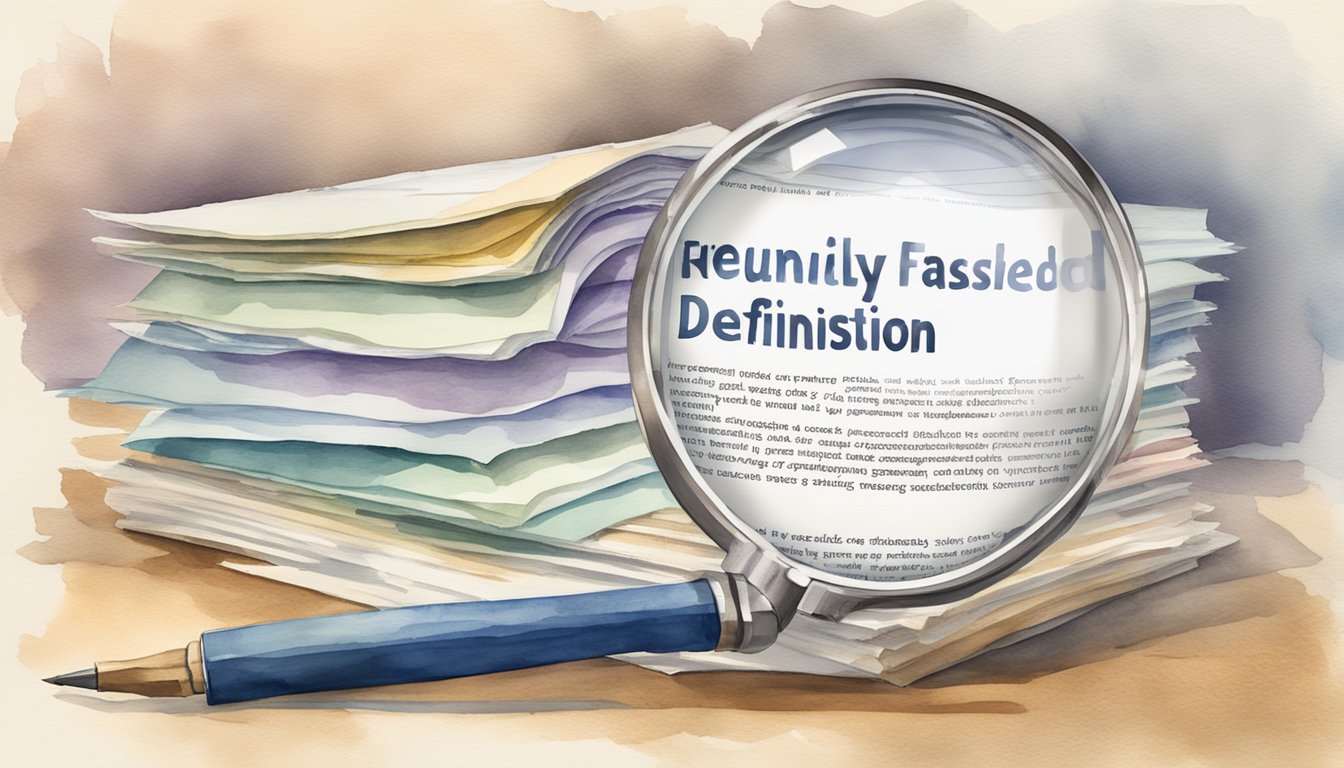What Does Underwriting Mean?
Underwriting is a fundamental concept in the insurance industry.
It involves assessing and evaluating the risk of insuring a person, property, or business.
An underwriter performs this task by using various criteria and data.
Insurance companies rely heavily on underwriting to decide whether to offer insurance coverage and at what price.
How Does Underwriting Work?
-
Risk Assessment: An underwriter evaluates the risk of potential policyholders. This involves reviewing medical records for life insurance, the condition of a property for property insurance, and driving records for auto insurance.
-
Premium Calculation: Based on the risk assessment, underwriters determine the premium. Higher risk often results in higher premiums to compensate for potential losses.
-
Policy Issuance: Once the risk and premium are assessed, the policy is either issued or denied. If issued, it contains terms and conditions tailored to the risk level.
Types of Insurance Underwriting
- Life Insurance Underwriting: Focuses on evaluating the health and lifestyle of individuals to set premiums.
- Property and Casualty Insurance: Involves assessing risks related to property, liability, accidents, and theft.
- Auto Insurance Underwriting: Examines driving history, vehicle type, and usage to determine the appropriate premium.
Roles of Underwriters
Insurance underwriters work for insurance companies to ensure that policies are priced fairly and that the company remains profitable.
They use data and tools like actuarial science to make accurate decisions.
Insurance underwriting is a crucial process ensuring that insurers can offer coverage while managing their risk exposure effectively.
Examples of Underwriting in Practice
Insurance Underwriting:
Insurance underwriting involves evaluating risks to decide on insurance policy terms.
An insurance underwriter looks at various factors to set the premiums that policyholders pay based on the risk assessment.
This process helps the insurance company determine coverage and pricing.
Medical Underwriting:
In health insurance, medical underwriting evaluates the applicant’s health history.
This helps in determining premium amounts and what coverage the policyholder will get.
The underwriter assesses medical records to decide whether to approve the policy and at what cost.
Loan Underwriting:
Loan underwriting is a process used by financial institutions to assess a borrower’s credit-worthiness.
Underwriters look at employment history, salary, and financial statements to determine loan terms.
This helps in minimizing risks for the lender and sets the interest rates for the loan.
Securities Underwriting:
In securities underwriting, investment banks help companies raise capital by issuing equity or debt securities.
This involves assessing the risks associated with the investment to set a fair price for the securities.
This practice is essential in managing investments for both the company and the investors.
Claims Underwriting:
When a policyholder files a claim, claims underwriters evaluate the legitimacy of the claim.
They also determine if the claim meets the policy terms.
This involves thorough risk assessment to ensure the insurance company handles claims efficiently and fairly.
Reinsurance Underwriting:
Reinsurance underwriting helps insurance companies manage their risks by sharing them with other insurers.
By assessing these risks, underwriters set the terms for reinsurance agreements, ensuring financial stability through risk distribution.
This practice helps manage large or unexpected claims, maintaining the insurer’s financial health.
Related Terms

Risk: Central to underwriting, risk indicates the potential for loss.
Underwriters in insurance assess risk to determine policy terms.
Companies: Companies issuing policies rely on underwriters to evaluate risks and set premiums.
Investors and Banks: These financial institutions depend on underwriting to assess the viability of securities, such as bonds and stocks.
Creditworthiness: A crucial factor, underwriters examine a borrower’s credit history and financial statements.
This helps determine loan eligibility.
Interest Rate: The cost of borrowing money, influenced by the borrower’s risk level.
Underwriters set rates based on credit scores and income.
Debt-to-Income Ratio: This metric compares a borrower’s debt to their income.
It helps underwriters gauge the ability to repay loans.
Financial Risk: Underwriters assess this risk in investments, loans, and insurance policies to protect their companies.
Life Insurance: Underwriters evaluate medical history, lifestyle, and family history to determine policy premiums and coverage.
Occupational Risks: Job-related risks are considered in underwriting processes, particularly in health and life insurance.
Employment: Underwriters review employment history to gauge financial stability.
Income: Verifying income ensures the borrower can meet loan or premium payments.
Assets: Assets serve as collateral for loans.
Underwriters assess their value to determine loan amounts.
Defaults: The failure to repay a loan affects future loan and insurance approvals.
Underwriters use historical data to predict the likelihood of default.
Mortgage Underwriting: Uses criteria like credit score, property appraisal, and debt ratios to approve or deny home loans.
Initial Public Offerings: Investment banks use underwriting to evaluate company viability, setting IPO prices and managing the public offering process.
Fees: Underwriters earn fees or commissions for their services in evaluating and assuming financial risk.
Policyholders: Individuals or entities holding insurance policies rely on underwriters to set appropriate premium levels and coverage terms based on assessed risks.
Software: Specialized software aids underwriters in analyzing vast amounts of financial data to make informed decisions on insurance coverage and loan approvals.
Frequently Asked Questions

When dealing with underwriting, there are several aspects to consider.
This section addresses common questions about insurance, banking, real estate, business, legal aspects, and financial securities.
What does the underwriting process involve in insurance?
In insurance, underwriting involves assessing risk factors like health, lifestyle, and driving record.
The underwriter also considers adverse selection, where individuals with higher risks may seek more insurance coverage, to price policies appropriately.
How do underwriters determine financial risk in banking?
Bank underwriters evaluate financial risk by analyzing credit scores, income, and debt levels.
They assess the applicant’s ability to repay loans and consider moral hazard, where the behavior of the individual may change after receiving financial support.
What are the roles and responsibilities of an underwriter in real estate transactions?
Real estate underwriters assess property values, verify buyer financials, and ensure clear titles.
They review documents and check for issues that might affect the property’s worth or the buyer’s ability to finance the purchase.
Can you explain the underwriting criteria used in business assessments?
Underwriting business assessments involve analyzing financial statements, market position, and business plans.
The criteria focus on understanding the company’s financial health and determining the risk of investment or lending.
What legal aspects are considered during the underwriting process?
Legal aspects in underwriting include compliance with regulations, ensuring proper disclosure of information, and evaluating contracts.
Underwriters must also check for any legal issues that might affect the financial stability of the transaction.
How is underwriting used to evaluate and price securities in finance?
Underwriters in finance evaluate securities by analyzing market trends, company performance, and economic factors.
They determine the appropriate pricing for stocks and bonds to match the level of risk involved for investors.






